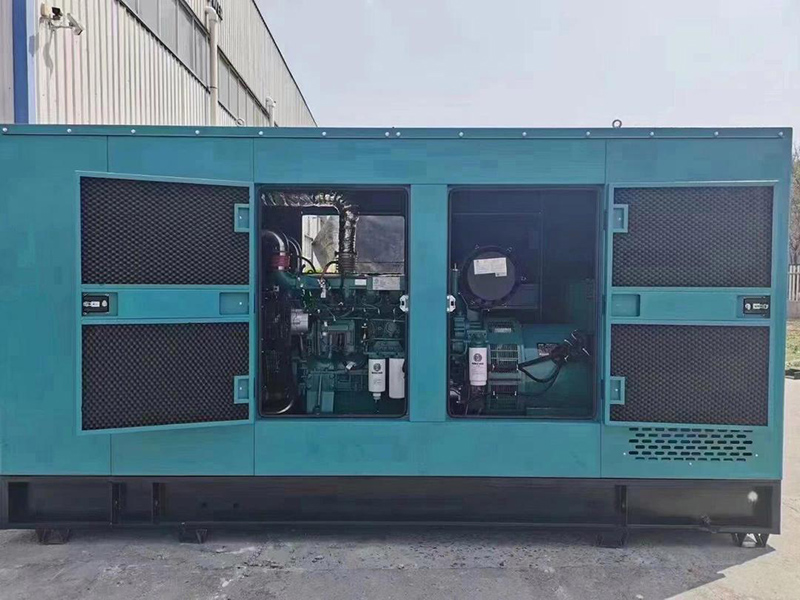Office Building Backup Power Solutions | Recommended Yuchai Generator Sets Across Multiple Power Ranges
Release time:2025-09-03 Click:26
In modern commercial properties and corporate campuses, dependable electrical supply is essential for business continuity, occupant safety, and regulatory compliance. This guide explains why a well-designed standby power system matters, recommends Yuchai generator sets across multiple power bands, and supplies technical and commercial guidance that helps global buyers — especially exporters and overseas facility managers — choose, install and maintain reliable backup power for office buildings.
Why Backup Power is Critical for Office Buildings
Business continuity: generators restore power quickly to critical systems — elevators, emergency lighting, security, and data rooms — minimizing downtime and financial loss.
Compliance & safety: fire pumps, emergency lighting and some elevator circuits are subject to local regulations that require guaranteed standby power.
Tenant trust & asset value: reliable backup power increases tenant retention and property valuation for landlords and operators.
Yuchai offers a wide engine and generator portfolio tailored for export markets. Key strengths include robust diesel engines, a broad power range that covers small towers to large campuses, solid fuel efficiency, and global certification coverage (CE, ISO and relevant emissions tiers for many markets). These attributes make Yuchai an attractive choice for overseas projects in Southeast Asia, the Middle East, Africa, Latin America and beyond.
Multi-power range availability: from compact 100–300 kW units to 1500 kW+ high-power solutions.
Support for parallel operation to increase reliability and allow staged capacity growth.
Competitive price-to-performance and widely available spare parts via global dealers.

Use-cases: single office tower, small multi-tenant building. Typical loads include emergency lighting, multiple elevators, security, reception, small server rooms, and limited HVAC.
Suggested models: Yuchai YC4 & YC6 series (compact, quiet enclosures, fuel-efficient at light to moderate loads).
Use-cases: multi-building office parks, mid-rise towers with central HVAC and dedicated data rooms. These gensets handle higher sustained loads and support additional systems such as chilled-water pumps and server racks.
Suggested models: Yuchai 6-cylinder & 12-cylinder series — balanced economy and output stability.
Use-cases: high-rise corporate HQ, campuses with mission-critical data centers or manufacturing-adjacent office facilities. These sites often require multiple gensets in parallel, long runtime and robust remote monitoring.
Suggested models: Yuchai YC16, YC20 high-power series — designed for heavy-duty and paralleling applications.
| Model | Rated Power (kW) | Suggested Use |
|---|---|---|
| Yuchai YC6A250-D20 | 200 | Small/medium office tower backup |
| Yuchai YC6MK400-D30 | 400 | Mid-size building central backup |
| Yuchai YC12VTD-800 | 800 | Large complex or campus |
| Yuchai YC16VTD-1200 | 1,200 | Headquarters, high-rise facilities |
| Yuchai YC20VTD-1500+ | 1,500+ | Regional backup, parallel-capable parks |
Correctly sizing the generator avoids overspending while ensuring reliable operation. A simple workflow:
List critical and non-critical loads (kW or kVA) — lighting, elevators, fire pumps, HVAC, server racks.
Sum the critical loads and apply a diversity factor if appropriate.
Choose generator capacity at ~70–80% of building peak load if only critical circuits are required; choose higher if you expect to run full building loads frequently.
Factor in starting currents for motors (elevators, HVAC compressors) and use rated prime or standby power accordingly.
Example: a building with 500 kW critical load might specify an 800 kW genset if additional non-critical loads or expansion are planned; or two 400 kW units in parallel for redundancy and maintenance flexibility.
Automatic Transfer Switch (ATS): selecting a properly sized ATS with transfer time, testing modes, and integration into BMS (building management system).
Paralleling & Synchronization: use a certified paralleling controller for load-sharing, automatic start/stop and redundant operation.
Fuel storage & management: provide adequate fuel capacity for required runtime and implement maintenance to prevent contamination and microbial growth.
Exhaust, ventilation & acoustic treatment: ensure compliance with local regulations and occupant comfort with sound-attenuated enclosures and proper exhaust routing.
Emissions compliance: verify local emission tier requirements (EU, EPA, local authority) and choose after-treatment if needed.
Reliable operation depends on disciplined maintenance. Typical schedule:
Weekly: exercise run 30–60 minutes under load and check coolant, oil leaks, and general operation.
Monthly: inspect and test ATS operation, battery voltage and charging systems.
Quarterly / 500 hours: change engine oil/filters if needed and inspect belts, hoses, and fuel filters.
Annually: full service — coolant flush, valve checks, injector inspection, full load test and emission checks.
Use genuine spare parts and keep a small critical spare-parts inventory (filters, belts, starter motor, common sensors) on-site for quicker repairs in export markets.
Q1: How do I estimate the correct generator size for an office building?
A: Add up the critical loads, consider motor starting currents and future expansion. In many cases configure capacity at 70–80% of the full building peak if only critical circuits are powered, or specify higher for full-building support. For redundancy, consider N+1 or parallel smaller units.
Q2: Are Yuchai gensets suitable for quiet urban installations?
A: Yes — choose a sound-attenuated canopy and proper acoustic treatments. Typical noise levels are engineered to be within 65–75 dB depending on model and enclosure.
Q3: What certifications and export documentation are usually provided?
A: Yuchai units typically can be supplied with CE, ISO manufacturing references, emission compliance statements, factory test reports and export packing lists. For North America or other regulated markets, confirm EPA or local tier requirements before ordering.
Q4: Can I parallel different model series?
A: Paralleling is recommended between same-voltage and compatible control-system gensets. For ease of commissioning and long-term reliability, parallel identical or compatible engine/controller families and use a certified paralleling control panel.
Exporters should provide clear technical data sheets, net and gross weights for logistics, skidding and packing details, and offer local partner contacts for installation and spares. Include recommended spare parts lists and optional remote monitoring packages to improve product appeal in overseas tenders.
When preparing proposals, provide: capital expenditure (generator + ATS + installation), estimated fuel consumption at 75% load, ongoing maintenance schedule and an ROI estimate that compares outage cost savings vs. project cost. Many building owners find payback is justifiable when measured against a single significant outage.
Site survey and structural assessment for genset weight and vibration isolation.
Proper exhaust routing and silencers; compliance with local emission and noise codes.
Adequate fuel storage with secondary containment and day tanks if required by code.
Electrical protection coordination (ATS, switchgear, breakers) and BMS integration points.
Commissioning plan including full-load test and performance report to client.
Designing an effective backup power configuration involves balancing capacity, redundancy, noise and emissions considerations, and lifecycle maintenance. Yuchai generator sets are a versatile option for global office building projects due to their broad model range, export-focused certifications and competitive lifecycle costs.
If you want, we can prepare a tailored specification sheet for your building: provide estimated critical load (kW), number of elevators, size of server room (kW) and preferred redundancy strategy (single large, N+1, or parallel smaller units). With that data you will receive a recommended model list, estimated fuel consumption and a sample Bill of Materials for installation.
Hot products
+86 15244567972
Contacts:Jack
